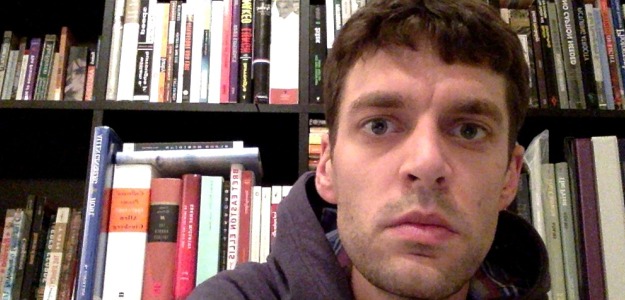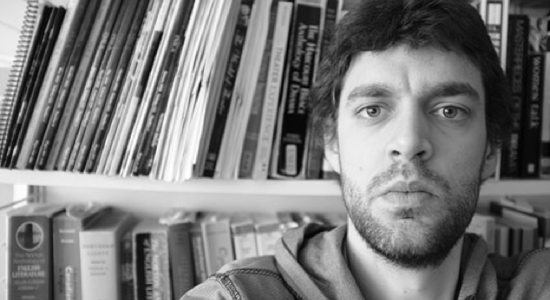
Congratulations to Chris Vanderwees!
The Department of English would like to congratulate John Christopher Vanderwees, who recently defended his PhD dissertation entitled: Aesthetics of Terror: Reflections on Post-9/11 Literature and Visual Culture. Chris was supervised by Professor Priscilla Walton.
Of his time at Carleton, Chris says:
“I found the department community at Carleton to be very welcoming and encouraging. I always looked forward to the monthly meetings of the theory reading group (Babel), which gave me a broader knowledge and language for creative interpretation (it is definitely one of the department events that I miss most). I am also grateful to professors in the department who not only made time to help me through the writing involved in applications for OGS and SSHRC, but also helped me improve my writing and research for publication.”
========================
The following is an excerpt from a recent story published in Carleton Now about Chris’s work, by Susan Hickman:
In August, after years of study, the now 30-year-old literature student defended his PhD thesis about the aesthetics of terror, specifically reflecting on post-9-11 literature and visual culture.
Vanderwees disagrees with some of the consensus amongst scholars of post-9-11 culture as an erosion of civil liberties, rigid representations of gender roles and reactionary war-mongering and fear-mongering.
“My dissertation is a kind of intervention,” Vanderwees explains, “in the way other scholars have been talking about post-9-11 culture and the widespread conservative reactions and patriotism in reaction to the event.”
Vanderwees’s thesis, which primarily investigates photography and fiction that sprung up in the wake of the event, revisits the critical reviews of New York novelist Jonathan Safran Foer’s “Extremely Loud and Incredibly Close,” published in 2005. It is a narrative by a nine-year-old boy whose father died in the destruction of the World Trade Center towers and it also features images of falling bodies.
Foer’s novel, Vanderwees notes, “subtly connects instances of past traumas and terrorism – such as Hiroshima and the Dresden bombings – and aligns them with 9-11 to force people to think about human vulnerability and the ways we talk about events. It forces people to engage with the image of the falling body. It’s an example of a text that forces readers to think more about what terrorism is. I’m trying to recuperate how harshly it was criticized.”
His thesis also examines the Bush administration’s use of Joel Meyerowitz’s Ground Zero photographs as part of an international foreign policy tour to gain support for the wars in Afghanistan and Iraq.
Other scholars, says Vanderwees, suggest literary and visual texts have supported a regressive climate of anti-feminism, hyper-masculinity and reactionary politics, while Vanderwees has made it his mission to “repair” some of those readings to redeem valuable political, ethical and affective aspects of the visual culture of post-9-11. Richard Drew’s famous photograph of “The Falling Man” and other images of falling bodies, predominantly repressed across America, might be some of those “redeemed”, says Vanderwees.
“I track the ways that images that emerge out of 9-11 continue to be reshaped and reused and remodified, and how that changes their meaning. The falling body in the opening credits of ‘Mad Men,’ for example, is a symbol of the times of uncertainty and turbulence.”
Vanderwees explains his dissertation cannot really reach a conclusion because the post-9-11 images will continue to influence culture and politics in many ways.
“I hope that readers of my thesis will reconsider their approach to certain texts and how they think about post-9-11 culture.”
